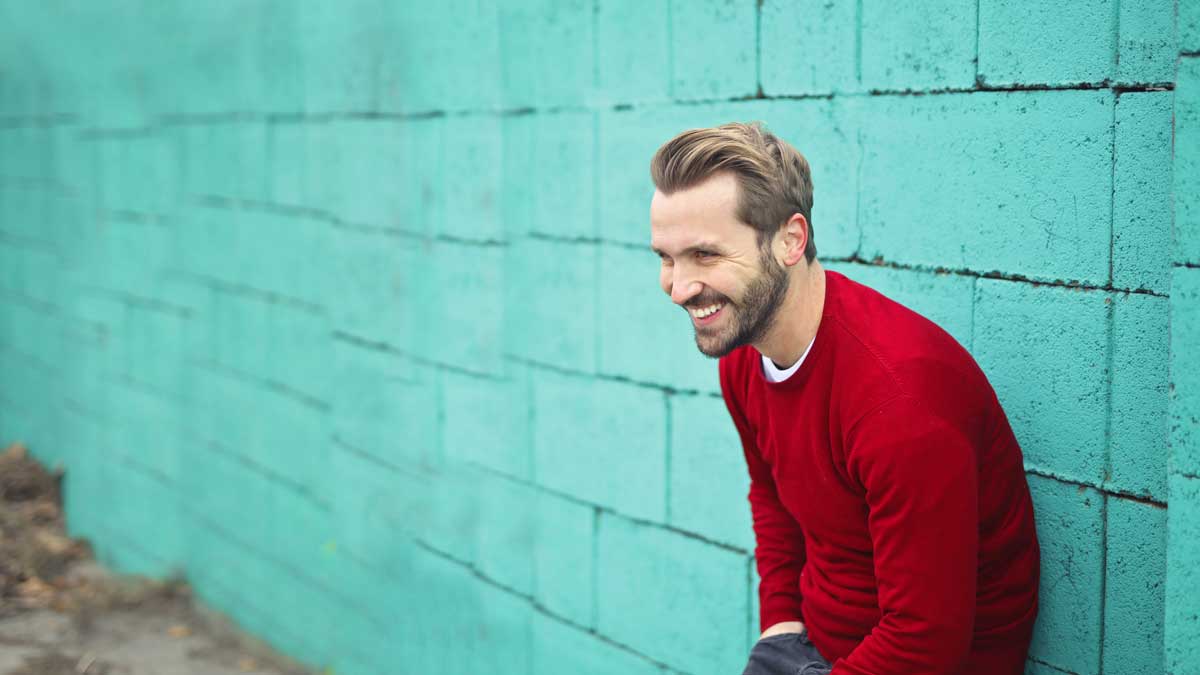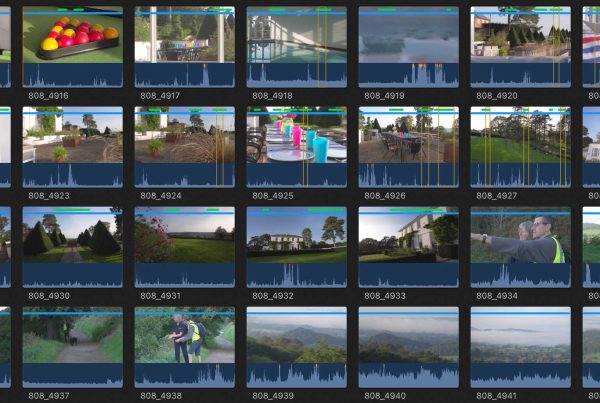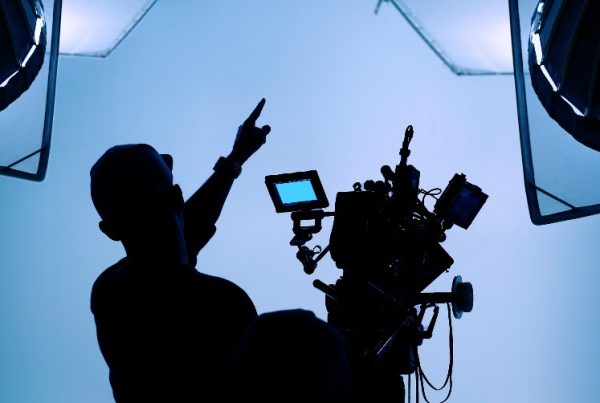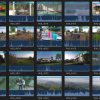How to Prepare to be Interviewed For a Video?
There are situations when a talking-head interview can be a compelling choice for your video requirements.
Just the thought of the word ‘interview’ however, can strike the fear of God in some people. You may be one of them. And it’s hardly surprising really as the word ‘interview’ is so often associated with ‘job interview’ – and by connection, ‘pass’ and ‘fail’.
So we try not to use the ‘I’ word for these situations. A better word to use is ‘conversation’. Feeling more relaxed now? OK – let’s continue.
Prompted Interview
Most talking-head presentations are produced through a prompted interview and by that we really mean a prompted conversation. This creates a natural and sincere dialogue between the on-screen presenter and their off-screen counterpart. As social animals, we are used to making sense of the world in this way. It’s how we learn from each other and how we build relationships, and it’s why prompted interviews (conversations) remain a well-trusted technique for many films.
What Exactly is a Prompted Interview?
By prompted interview we mean a semi-structured conversation, whereby the speaker is asked open-ended questions on agreed themes. The questions are designed to allow you to present your key messages in a natural and authentic way.
Most commonly, the speaker will be looking at the interviewer who is off camera, which is much easier to do than talking into a camera lens. This creates a feeling of rapport and intimacy between the speaker and the off-camera listener. From the audience’s perspective, it’s as though they’ve been allowed to eavesdrop into a real-life conversation.
How to Prepare for a Prompted Interview
If you’ve been asked to participate in an interview – or conversation – for a video, you may well be wondering how best to prepare.
Below are some points that can help things run smoothly on the day.
One: Do Not Rehearse What You Are Going to Say
This may seem counter-intuitive to you and it’s often the most senior or high-profile speakers who are most tempted to rehearse what they are going to say – but please, please resist the temptation to do so.
Yes – it’s true that in many situations in life, some conscientious preparation produces the best results, but believe us when we say – this isn’t one of them.
Rehearsed interview responses nearly always lead to ‘wooden’ results. The speaker will look and sound stiff and unconvincing. Audiences are sensitive to inauthentic responses on film and rehearsed answers will often come across as disingenuous.
In addition, rehearsing can result in a lack of personality and warmth on screen which can turn-off many viewers. So keep it fresh – a degree of spontaneity is essential if you are to engage and inspire your audience.
Two: A Brainstorm Can be Helpful
If you really feel the need to prepare for your interview, then a quick brainstorm can be a good way to stir up ideas prior to filming. This can be done alone or with others who know your subject or who have similar experience to you.
The mere act of doing this will highlight some things worth mentioning and can help enrich your responses once filming begins.
Do not be tempted to craft actual sentences in your head beforehand or hold on too tightly to key words. All you need do is identify a set of key messages that you want to get across and let the sentences form themselves naturally during the course of the conversation. And take comfort from the fact that most audiences don’t take away more than three messages – so generally speaking, you rarely need to identify more than five key messages for any interview.
Avoid referring to your bullet points during the interview, as this can interfere with the natural development of the dialogue with the interviewer. You can always check your points at the end of the interview and then take the opportunity to voice anything you think may have been missed out.
Three: What Not to Wear
• Avoid clothing with random slogans or logos – these can distract and confuse the viewer if they aren’t consistent with the branding of the video.
• Avoid fabrics with spots, stripes, checks and busy patterns – detailed busy patterns can sometimes cause a moiré effect on film, in the form of strange wavy patterns over the fabric.
• Leave your jangly jewellery at home. In everyday conversation, we do not notice the amount of noise that jangling bracelets, necklaces and even ear-rings can make when we are talking and gesticulating. Microphones, on the other hand, are surprisingly sensitive to such noise and will pick every clink and rattle.
• If you wear specs, it’s a good idea to clean the lenses prior to an interview. In certain lights, smudges and smears might show up on camera.
• Make sure you wear something comfortable that you feel confident in. This will help you relax, so that you look and sound natural.
• Go easy on the moisturiser – it can make your skin look very shiny under camera lights. If you routinely use make-up, then aim for a much more matt finish than usual on filming days. Likewise, don’t be alarmed if the production crew suggest powdering your skin. It’s done to counteract the effects of strong lights and sensitive cameras. You won’t look like a clown.
Four: Trust the Interviewer
In the hands of a skilled production team, prompted interviews unfold in a conversational way, so that the speaker’s responses are natural and spontaneous.
It’s important that you trust your interviewer, so don’t be thrown if the line of questioning is not quite what you imagined. Just go with the flow. The interviewer may just be warming you up or experimenting with a different angle to get a fresh sounding response. They may also be seeking a variety of responses so that the editor has some options during the edit.
A professional interviewer will have done their homework and be clear about what they need to cover. It is their responsibility to steer you through the conversation – so sit back and relax, and take it one point at a time.
Five: Include the Question in the Answer
In the vast majority of situations, the interviewer’s questions will not be included in the film. This means your answer needs to quickly let the audience know what topic you are referring to.
The way to do this is to include the subject raised in the question in the beginning of your answer.
For example:
Interview Question: ‘Tell me about the most rewarding aspect of your job?’
– If you answer ‘Helping people’ at this point, the audience won’t have any idea what you are referring to.
Interview Answer: ‘For me, the most rewarding aspect of my job is helping people and I find that…’
Or you could paraphrase for a more natural response by simply saying ‘I love to help people in my job, It’s what gets me up ion the morning.’
Six: Let Go and Don't be Too Careful
As much as prompted interviews can be steered to cover the required messaging, they can also throw up ‘gems’ of insight and anecdote that no one ever anticipated during pre-production planning.
These ‘discovered’ aspects to your story, are often the elements that can give your video a distinctive personality and are particularly moving or persuasive. They can provide the moments that are most remembered by your audience too.
That said, you need to really let go and be yourself for these ‘gems’ to arise. Don’t be scared of saying the wrong thing, upsetting your boss or looking foolish. If you worry too much about getting it ‘right’ you will probably end up sounding uninspiring.
Remember -your interview will be edited. The best of your responses will be selected and shaped to ensure they are completely on brand and on message.
This means that unlike a public speaking engagement or a live broadcast, there is no pressure to be completely word perfect.
If you say anything inaccurate, inappropriate or just plain daft – you don’t need to worry. The production team are there to present you in the best possible light, which means they won’t use anything you say that is off the mark. Slips and wrong turns will be removed in the edit. So relax, and have a little fun and experiment with your ideas.
Seven: Take Your Time
When feeling under pressure to ‘perform’ in front of the camera, people often become frightened of pauses and tend to talk more quickly. They do this because they don’t want to appear at a loss for words, when in fact slower speakers can often make a good impression on viewers.
If you are relaxed about pausing when speaking you tend to come across as authoritative and confident. It also helps you formulate more thoughtful responses and it gives your audience time to digest what you are saying.
Eight: Smile
Smiling at the beginning and end of what you have to say will make your video interview more engaging for your audience.
In most countries, research shows that if you smile, people are more likely to trust you and that means they will be more inclined to believe what you say.
This only works with genuine smiles that include your eyes and not just the corners of your mouth.
Of course, there may be rare occasions when the subject matter is so serious that a smile would be inappropriate, but generally most interviews are energised and lifted by a few smiles.
Nine: Show Some Emotion
We often capture the strongest footage towards the end of an interview, where the interviewee feels that the job is done and begins to talk freely from the heart.
Don’t be frightened to show some passion about what you know or have experienced – no matter what it is. Any topic will be interesting on film when the speaker shows some genuine enthusiasm for their subject.
Showing some genuine passion for your subject can be just what’s needed to make an interview truly engaging and believable for your audience.
And Finally...
… a filmed interview is a great chance to document or celebrate what you have achieved, your ideas, knowledge and experience. So go for it, and let your production team do the rest.


















